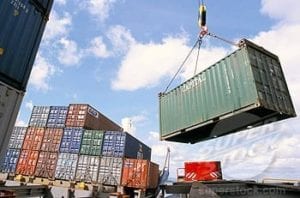East Africa is said to have one of the highest surface cargo transport costs in the world, up to 70 per cent more than in the United States and Europe, and surprisingly, up to 30 per cent higher than in Southern Sudan, Africa’s newest nation, which after the split with the north, has no direct access to global trade links.
Of course, road transport is always costly, more so where the infrastructure is not well developed. But those bemoaning the high cost of transportation today, should not so much sound like the angels of hope. More than any other part of Africa, except in South Africa, East Africa had the most integrated railway network, jointly run and owned by the three partners of the former East African Community (EAC).
All that became history in 1977 when a group of powerful Kenyans pursuing narrow political interests brought down the former EAC. The East African Railways Corporation (EARC) was perhaps the biggest casualty of the break up. Neither Kenya nor Tanzania was able again to run an independently profitable railway system and network. I think that was the genesis of high surface transport costs in East Africa.
When the region decries high road transport costs today, it should be mindful of that fatal mistake that jeopardised life for all in the region. Anyway, bygones are bygones. What is important is to look at where we are and the future ahead of us. If there is any miracle so far, it is how did the region manage at all without regulated road transport?
Of course that also was a result of a primitive culture whereby some powerful business interests thought it was the boon time for their fleets of trucks, forgetting the toll on the infrastructure. With poor roads in Tanzania, Kenya became the natural route for reaching some parts of the neighbouring country. Soon, roads in Kenya too became impassable due to heavy axle weight while Tanzania embarked on a major drive to build roads in the expansive country, which is roughly the size of Kenya and Uganda combined.
It was little wonder therefore, that with deepened integration, harmnonising axle weight was one of the first steps that the partners took. Surface cargo transport tariffs are high because transporters too want to realise quick return on their investments. On books, a truck’s lifespan is only four years while the cost of acquiring one runs into millions of shillings.
So, we can’t blame the transporters! At the same time, I don’t see any quick revival of the EARC. Such being the case then, East Africa is going to have high road transport costs for quite some time around. It is in that light that railway line rehabilitation and development initiatives should be given priority and encouragement. The Central Line in Tanzania for instance, could easily be the lifeline for landlocked DR Congo, Rwanda, Burundi, Uganda and parts of Zambia.
That there are no builders were trees abound, is probably true also for East Africa. It is a shame that the region does not utilise effectively its water bodies, among the largest in the world, which are the inter-territorial natural highways and links.
But above all, cargo theft is a real problem with road transportation in the region. At least revenue authorities have made a commendable job plugging the loopholes that made it easy for dishonest transporters to steal cargo entrusted to them by importers and exporters. However, this is more of a cultural problem than anything else. When you have people who do not fringe at stealing property entrusted to them for conveyance, then you probably have the most injurious aspect of doing business with a particular individual and region. Cargo theft kills the trust for doing business. Taken together with the high road transportation tariffs, the two areas should be given serious consideration by shippers if the region is to compete, thrive and prosper along with the rest of the world. Source: allafrica.com







